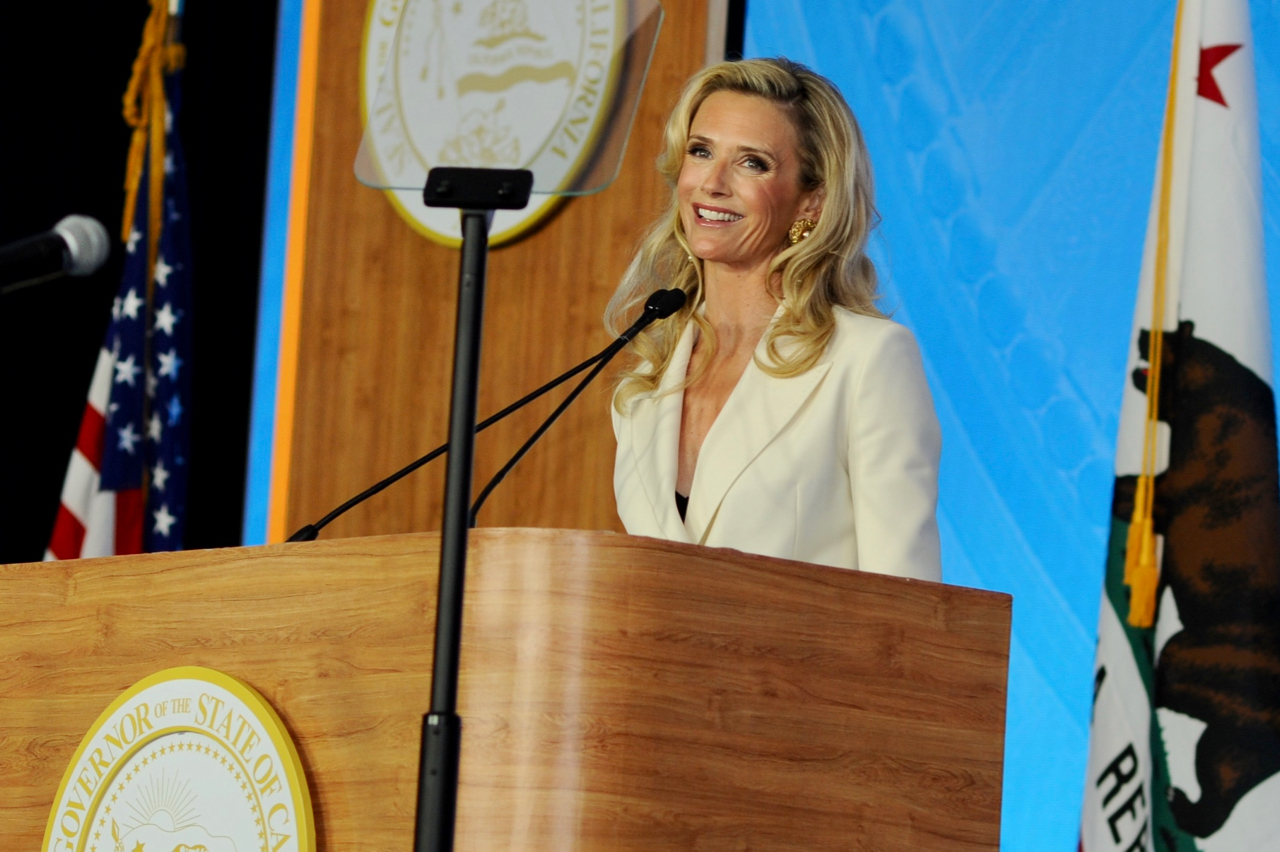
National Women’s Soccer League (NWSL). (Photo: NWSL)
Why the Gender Pay Gap In Sports?
2023 Women’s World Cup renews fiery debate
By Martin Marks, July 26, 2023 9:22 am
In case you haven’t noticed, which in the United States is statistically likely, the 2023 Fédération Internationale de Football Association (FIFA) Women’s World Cup is upon us. Most unsophisticated Americans know the sport as soccer and relegate it to almost novelty status while the rest of the planet calls the sport football (or futbol) and elevates the competition to the most popular competition in the world at times commensurate with a daily struggle for life itself.
This worldwide event, this year sited in Australia and New Zealand, occurs every four years and usually follows the men’s competition the previous year. In the years leading up to the quadrennial spectacle, teams compete in qualifying matches in order to be placed in the coveted final field of 32 teams.
The United States Women’s National Team (USWNT) has historically been a powerhouse in international competition having won World Cups in 1991, 1999, 2015, and 2019. And since soccer became an Olympic sport, USWNT has received a medal in every competition with the exception of 2016 when they were eliminated in the quarterfinals.
While the women’s team has met with great success on the field—or pitch in football parlance–in recent years, they have perhaps become better known for activism off the field in the world of politics, social causes, and the gender pay gap between men and women athletes in particular. And at times that activism has spilled out onto the field during international competition, many times on foreign soil.
The gender pay gap has been well documented across many professional sports for years. The differences between male and female compensation in wages and prize money has been stark when comparing sports like basketball, golf, baseball (softball), soccer, and tennis. Tennis is particularly interesting, and more on that later.
In soccer, a male competing in Major League Soccer (MLS) in the Unites States can expect a yearly salary of $410,000 while their female counterparts in the National Women’s Soccer League (NWSL) command a comparatively paltry sum of $35,000—hardly a living wage.
Further, the compensation differences and other benefits for the national squads that play in international competitions including the World Cup and Olympics are also dramatically lopsided when the genders are compared. There is no doubt that the compensation package analysis is complicated. Much of the disparity comes from the collective bargaining agreements with U.S. Soccer that are struck separately for both the men’s and women’s teams, and ultimately how the players choose to be paid.
When it comes to the World Cup, one would need to look no further than the revenue brought in from the respective men’s and women’s competitions to get a hint at why the pay disparity is as much as it is.
Articles published in such entities as Business Insider, Washington Post, and CNBC, reference that in the last round of World Cup competitions, the prize pools provided $400 million for the men compared to $30 million for the women
Yet, it has been widely reported that the revenue brought in from the last Men’s World Cup approximated $6 Billion, while the Women’s World Cup brought in $131 Million. A quick back of the envelope calculation would seem to indicate that it is the women who are outpacing the men based upon their compensation relative to the revenue brough in.
There are those who dispute the veracity of the $6B vs $131M revenue disparity. Yet as they dispute it, again and again it is posited that actual FIFA World Cup revenue cannot easily be known.
Really?
Let’s assume that the actual dollar amounts from all sorts of revenue coming in are in fact hard to calculate. Why don’t we take a look at two of the major components that would indicate the relative popularity of the men’s and women’s games—game attendance and television ratings?
The total and average per game attendance for the men’s World Cup certainly dwarfs those for the women’s event.
Now let’s examine those that viewed the matches remotely either through television, streaming, or some other modality. Looking at the Men’s World Cup of 2018 compared to the Women’s World Cup of 2019 we find:
Total viewership
2018: 3.572 billion
2019: 1.12 billion
Final Game viewership
2018: 1.12 billion
2019: 82.17 million
Average audience
2018: 191 million
2019: 17.27 million
These are significant differences indeed, and it would not be hard to extrapolate from these numbers that the men’s game, at least for now, is more popular than the women’s game and likely generates greater revenue—whatever those exact figures are.
As an aside, the attendance levels for male and female professional soccer leagues in the U.S. tell the same story regarding relatively popularity and presumed revenue. The men’s league (MLS) had an average game attendance of 21,913 while the women’s league (NWSL) received an anemic 9,431.
But let’s give credit where credit is due. The popularity of Women’s soccer worldwide appears to be growing. Many are projecting that the Women’s World Cup will set attendance and revenue records in 2023. That said, FIFA officials still needed to give away some 20,000 tickets for some early round matches this year.
Most of all, the American women have far exceeded their male counterparts in international competition successes for quite some time now.
In light of all this, the women have recently become winners off the pitch. What was originally a wage discrimination complaint filed with the Equal Employment Opportunity Commission (EEOC) which then evolved into a lawsuit against U.S. Soccer, the American governing body for the sport, a settlement was reached whereby American women players will receive $24 million in back pay, and a promise to be paid on equal footing with the men when it comes to World Cup revenue. Additionally, the women will be granted other perks to match their male counterparts including per diems, additional coaching, and comparable travel accommodations.
In light of all of the above, was the agreement fair? Debatable. But in this era of Equity, Diversity and Inclusion, this outcome was eminently predictable.
But before departing from the issue of a gender pay gap in professional sports, let’s take a look at some of the other major sports, shall we?
Baseball: The average salary for a Major League Baseball (MLB) player is around $4 million/yr. There is no comparable women’s baseball league. However, there have been a few iterations of a Women’s Fast Pitch softball league where the most recent average compensation was listed as $6,000.
Basketball: The average salary for a National Basketball Association (NBA) player is more than $8 million/yr. A Women’s National Basketball Association (WNBA) player earns about $75,000/yr. The revenue differences which once again corresponded directly with game attendance and television viewership are exponential in nature. In fact, the WNBA loses money, operating in the red since its inception. All this while still being subsidized by the NBA.
Golf: A male professional golfer on the PGA tour can expect average annual income of $1.2 million, while an LPGA player will reap approximately $50,000/yr. This disparity is likely to grow as the Saudi-backed LIV Tour will now be pumping Billions into the men’s game with their recent agreement with the PGA.
Tennis: Here’s where things get interesting. Tennis was decades ahead of soccer in securing pay equity between the sexes. Due to the advocacy and efforts of Billie Jean King, average yearly income among male and female professional tennis players is pretty close with prize money in the major championship tournaments being exactly equal–in spite of the men working harder playing best of 5 set matches while the women play best of 3.
Some of the other lesser tournaments still have a prize money disparity between ATP (men’s) events and WTA (women’s) events, but that is promised to be rectified in the next few years.
Tennis pay equity brings up an interesting point. Tennis is really the only professional sport where the men and women play at the same time at each major tournament. When one buys a ticket to the U.S. Open, Wimbledon, French Open, or Australian Open, you are purchasing a ticket for the event irrespective of whether you wish to view a male or female match. One would have to wonder if the popularity and attendance at a women’s Grand Slam event could rival that for the men if the tournaments were held separately. There have been many instances where television viewership of a women’s Grand Slam final has surpassed that for the men. Is this also facilitated by having the men and women compete at the same tournament? Is it because of the personalities involved in the matches? Something else perhaps?
So, what of it? Why do men outearn their female counterparts in professional sports—in some instances by dramatic margins? Is it because of blatant or subtle prejudice bordering on misogyny? Hardly.
Let me break it down for you. Quite simply, men and women are not equal.
There, I said it.
Men and women are not equal, and that—for lack of a better phrase—is “settled science.”
By and large, males are larger than, faster than, and stronger than females, and this routinely yields a more compelling and enjoyable sporting event to watch. Are there exceptions? Of course. But for the most part, the men’s sports competitions command a greater audience and patronage and correspondingly greater revenue.
And when there is greater revenue, those responsible for earning that revenue merit greater compensation, right?
Or then again, maybe not……
- Is DEI Ready To DIE? - January 4, 2025
- Just How Effective Was The Abortion Debate in The 2024 Election? - November 18, 2024
- Federal District Court Holds UCLA Accountable for Campus Antisemitism - August 20, 2024





Yes, Martin. If you watched the Women’s US Open golf tournament at Pebble Beach the difference in athletic/golf ability was obvious. No comparison to the men. The one woman golfer who tried to compete on the men’s tour, Michelle Wie-West (married to the son of NBA Hall of Fame player, Jerry West) was a flop; but of course made a name for herself doing it. The media loved her. However, her attempt to compete with men arguably hurt women’s golf more than helped.
Crazy how the left is arguing that women don’t exist but that they should be paid equally to men. Seems they really just want everything!!
How many of us have stopped watching professional sports entirely and use our time more wisely?
Professional sports pay is generally calculated according to how much the particular sport and specific team generate in revenue and the value to the team of the particular athlete. It’s a business. I would expect that when women’s sports begin to generate revenue comparable to the men their pay will increase accordingly. You can’t compel people to like and watch what you want them to. They will make their own decisions about what to like in sports.
100% correct. This simply is the hard truth and there is no going around it.